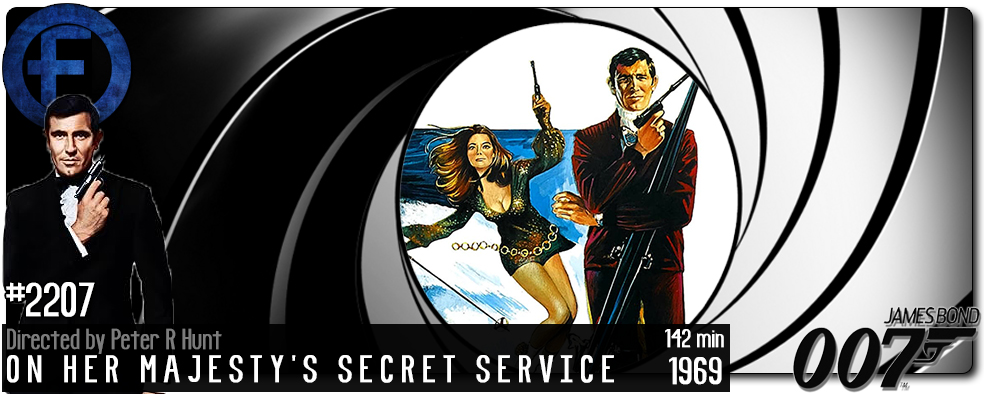Movie Review – On Her Majesty’s Secret Service
Principal Cast : George Lazenby, Diana Rigg, Telly Savalas, Gabriele Ferzetti, Ilse Steppat, Lois Maxwell, George Baker, Bernard Lee, Bernard Horsfall, Desmond Llewelyn, Yuri Borienko, Virginia North, Geoffrey Cheshire, Irvin Allen, Angela Scoular, Anouska Hempel, Catherina von Schell, Joanna Lumley.
Synopsis: James Bond woos a mob boss’ daughter and goes undercover to uncover the true reason for Ernst Stavro Blofeld’s allergy research in the Swiss Alps involving beautiful women from around the world.
********
Throughout my nearly five decades of life on this space rock, I’ve probably seen most of the James Bond films ever made. At least I think so, it’s such a daunting task to go back and re-watch them all just to be sure. One thing I am sure of, however, is that until now I’d never seen the stand-alone starring performance of Australian model-turned-actor George Lazenby as the eponymous British secret agent, in On Her Majesty’s Secret Service. Having had a chance to appraise it some fifty-something years after it debuted, the film is easily among the more realistic and/or brutal of the 60’s Bond outings, and although brimming with franchise tropes (such as random sex with hot women, secret exotic bad guy hideouts on mountaintops, etc etc), the film felt a lot less of a Bond film and far more like a big budget television series.
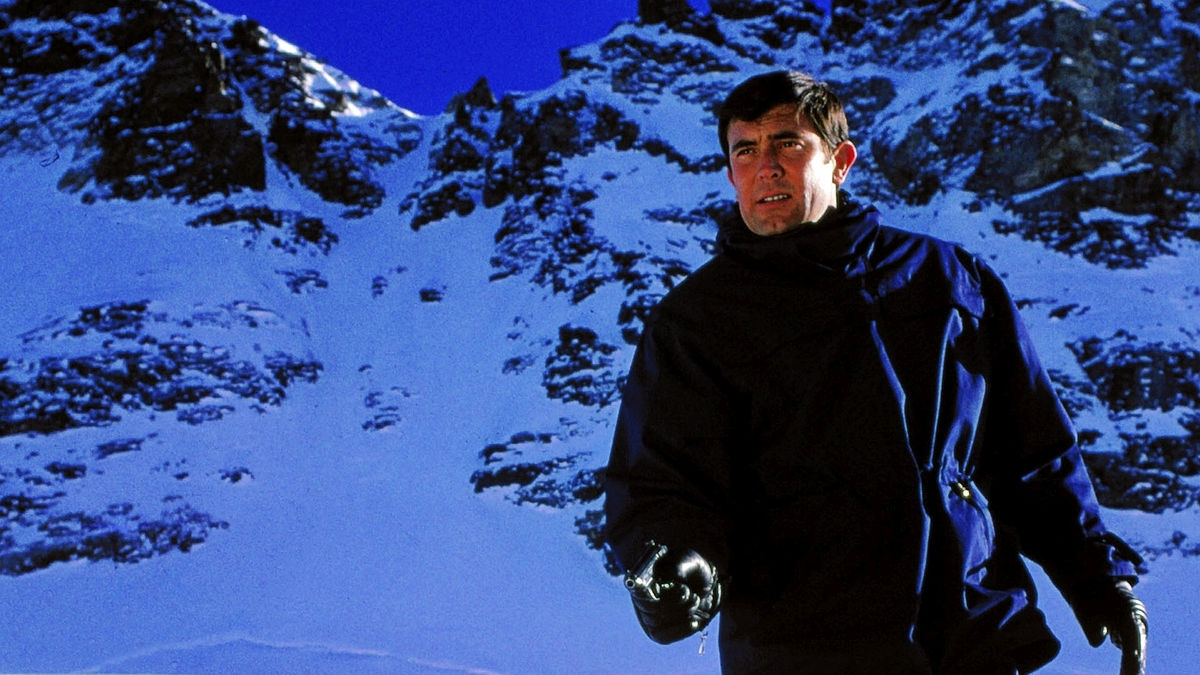
As the eleventh published James Bond novel by Ian Fleming, and the third in the loosely connected Bloefeld Trilogy including Thunderball and You Only Live Twice, Peter R Hunt’s adaptation of the novel is regarded by many as arguably the most tonally adjacent of all the big-screen films bearing the superspy’s moniker, with Bond feeling far more human and tangible than the elusive, affable chap with gags that had become the norm in later Connery productions. That’s not to say that Lazenby’s single entry isn’t without humour, because it most certainly contains plenty – you have to squint in 60’s English to see it, though – but there’s a vulnerability to this James Bond that is emblematic of just how ruthless this espionage game must have been. Lazenby’s Bond never gets to feel real joy, at least not by the end credits, and the life of a spy seems forever intertwined with betrayal and grief.
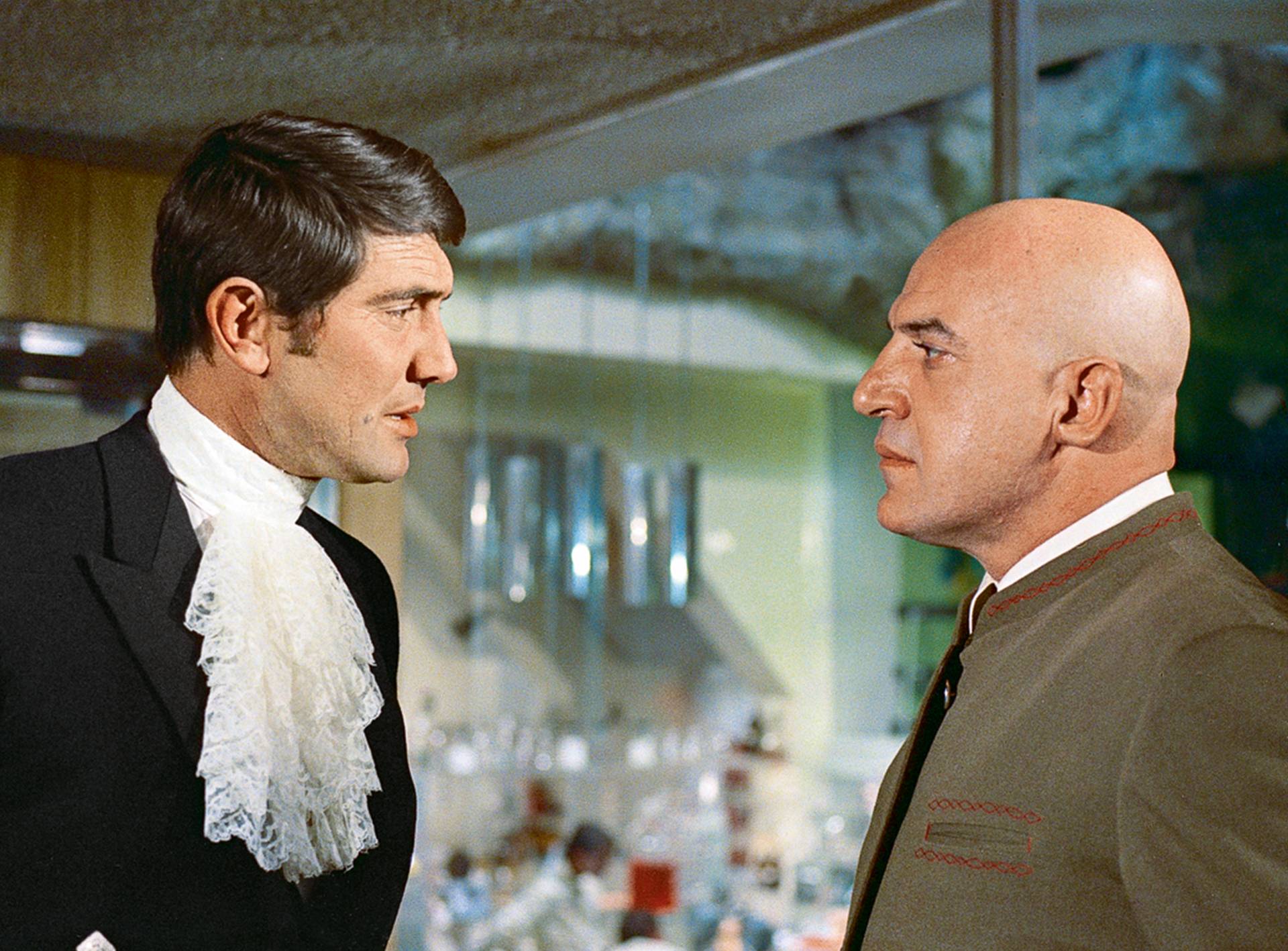
The convoluted and rights-issue publication and production history of both Flemings novels and MGM’s films continue to make my eyes bleed every time I think about them, but let’s just here that On Her Majesty’s Secret Service is canonically the sixth film, but thematically located somewhere just before Timothy Dalton took over. That MGM and producer Albert “Cubby” Broccoli produced the Fleming novels out of publication order, thereby having to rejigger some of the chronology to suit the big screen, has long been a bugbear of mine. The novels (of which I have only read a couple) seem to follow a very loose connectivity most of the time, but the films almost always have no links between what came before or after – at leats until Daniel Craig took the role, with Connery, Roger Moore, Dalton and Lazenby saddled more with “inspired by” movie screenplays than a genuine “James Bond Cinematic Universe” we might expect today. Aside from recurring characters in M, Moneypenny, and Q, for the most part each Bond film stands alone, and On Her Majesty’s Secret Service in particular mainly due to its new starring man as Bond.
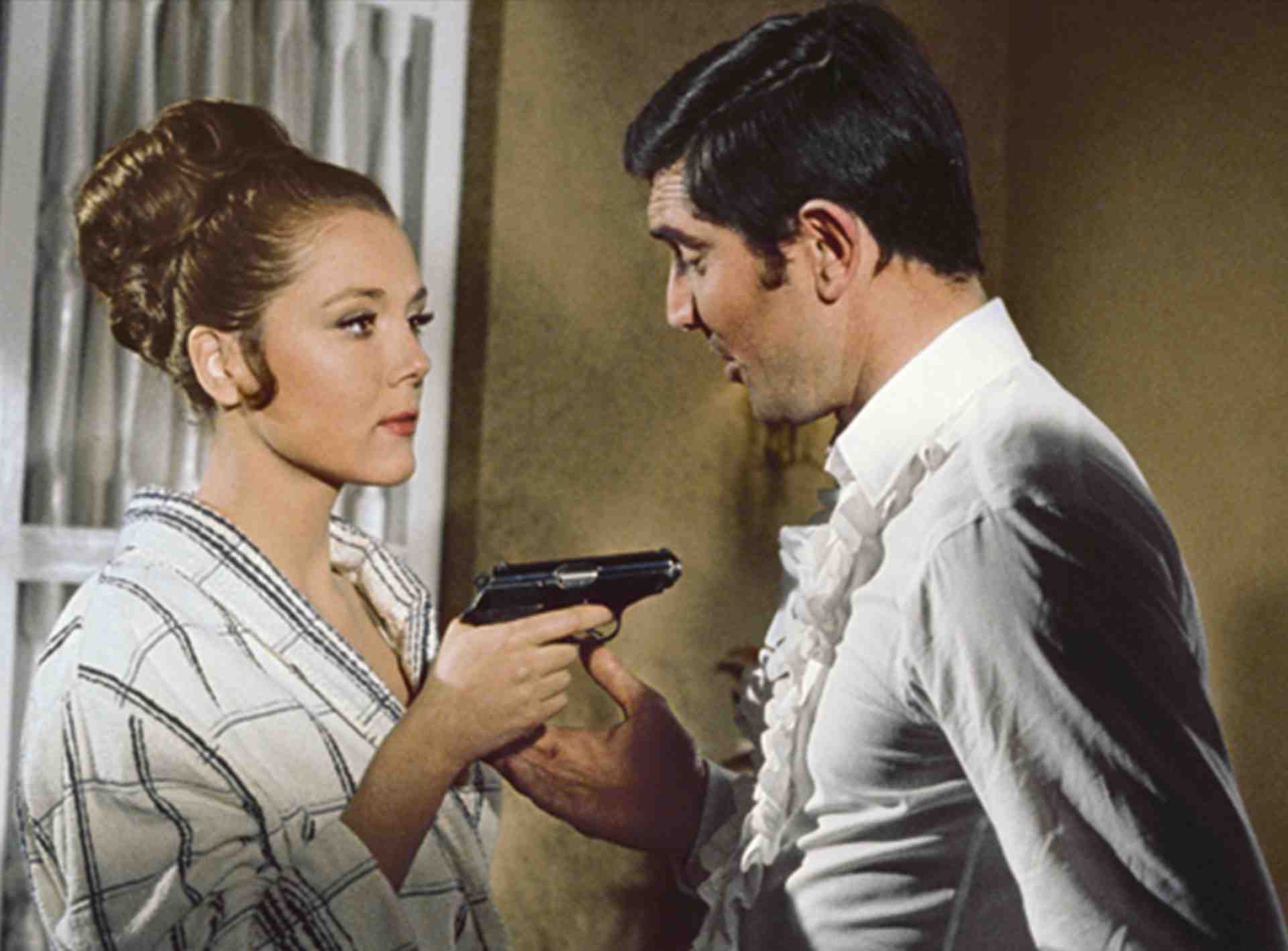
Lazenby makes a great Bond. I know, I was just as surprised to hear myself say it as you were, but it’s true. He’s dashing, very good looking, acts with the material in a manner that suits the role without asking him to emote or convince you he’s a master thespian, and can carry a nice gag line. Admittedly, Peter Hunt’s direction and editorial choices do Lazenby very few favours in the action sequences, but when he’s being asked to romance da ladiezz and stare off into the middle distance the camera absolutely loves him. It’s easy to see why MGM picked him for the role; if nothing else, he makes for a mighty fine replacement for Connery’s iconic shoes. Lazenby is joined by the great British actress Diana Rigg – the actress sadly passed in 2020, but not before finding fame again with a superb guest role in Game of Thrones – and as a pair the couple sure have some great chemistry together. Rigg pays Bond’s long-time love interest Tracy di Vincenzo, whom he takes as his wife in the film’s final moments. The true scene-stealer of the film, however, is Telly Savalas as Bloefeld, one of Bond’s most enduring villains. I admit, my preference for the character is the performance of Donald Pleasance but Savalas is an absolute hoot, manic and suave all at the same time, and if I could have had more of him as the arch-nemesis I would have love it.
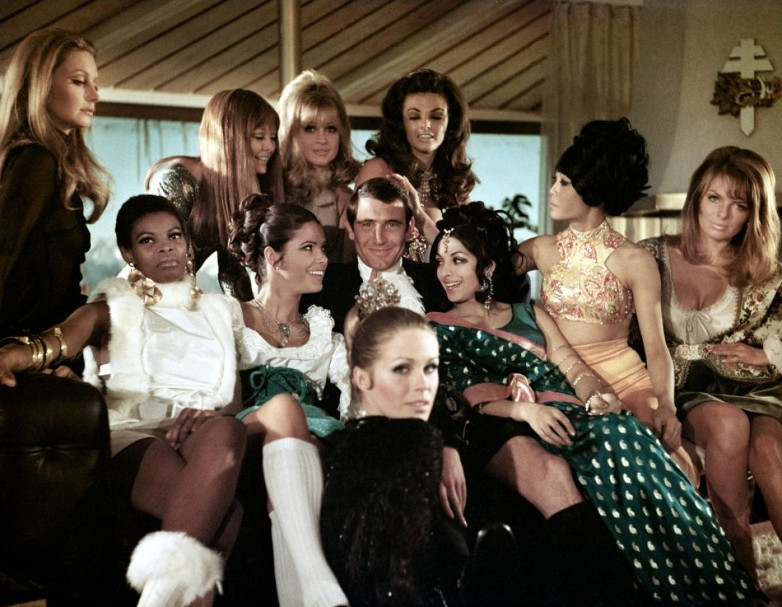
The plot of the film is pretty much a nonsense, with Savalas’ Blofeld using a bunch of hot young women to infiltrate society using some mysterious virus, for no other reason than because he can I guess. The group of women, known as the Angels Of Death, are a collection of women from all over the globe representing just how scalable Blofeld’s plan truly is, and while Bond initially succeeds in bedding a couple of them, he realises they’re being forced to participate against their will, or at least being duped in motivation. Sharp-eyed viewers will likely spot a young Joanna Lumley among them, as well as New Zealand-born Anousak Hempel, and they form quite the juicy eye-candy as a gaggle of winsome conquests for Bond to chose from. Aside from this there’s a variety of snowy mountain avalanche chases, smash-em-up-derby racing, and a weird beach fight top open the film that feels like it was edited by a robot, and plenty of cool little practical stunts to keep the momentum going. Your mileage will vary on some of the action sequences and stunt work, but on the whole it’s a fairly pleasant late 60’s outing.
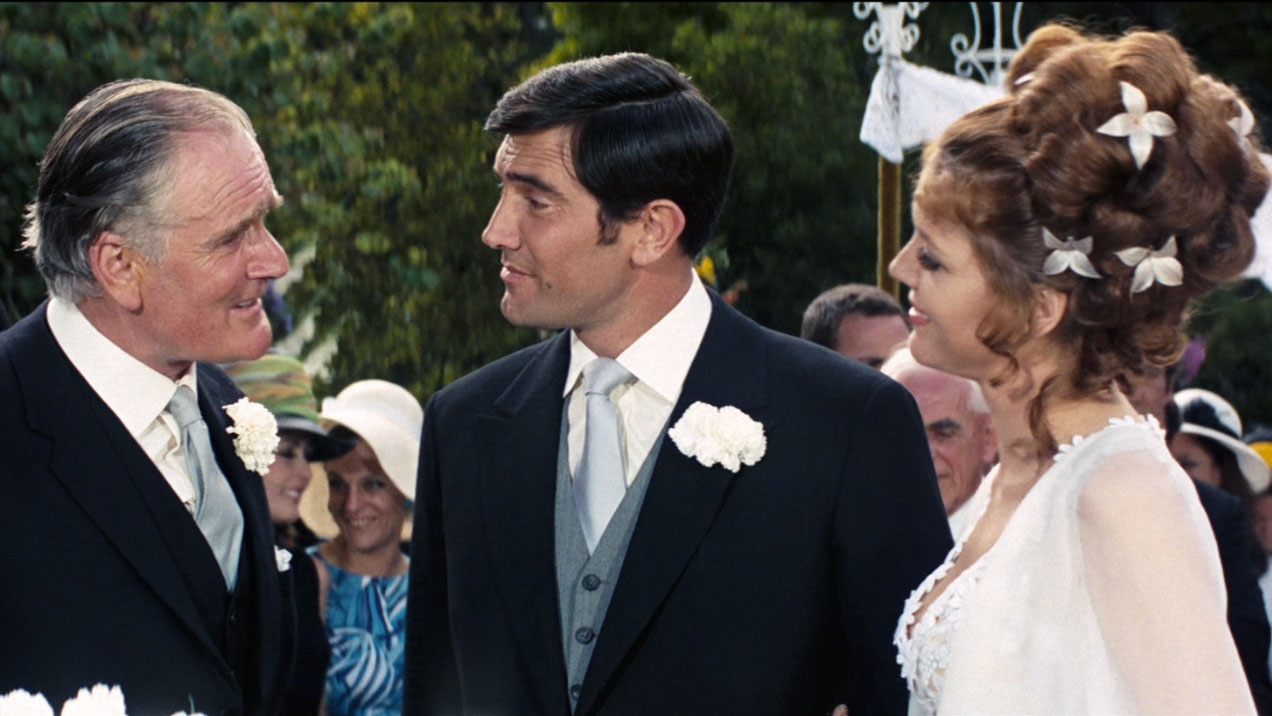
On Her Majesty’s Secret Service may be closer to the tone Ian Fleming was aiming for with his pulp spy books, but as a film production it flies a little too close to the sun for my liking. The disconnect between this and the other films of the canon make it a bit of a blip on the radar, offering promise but an unsatisfying payoff, but Lazenby is decent enough (far better than Moore, in any case) and the darker edges of the film’s premise make it a more adult viewing experience than many of the films of this period, even in spite of the slight humour laced throughout. While it lacks the iconic status of the Connery era or the propulsive modernity of Brosnan or Craig, Lazenby’s one-shot Bond effort is remarkably resolute.

